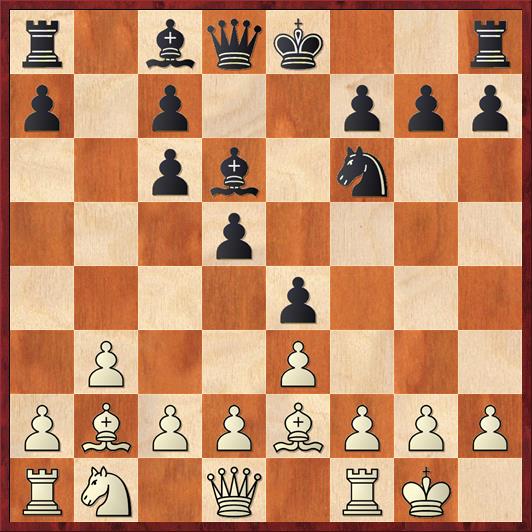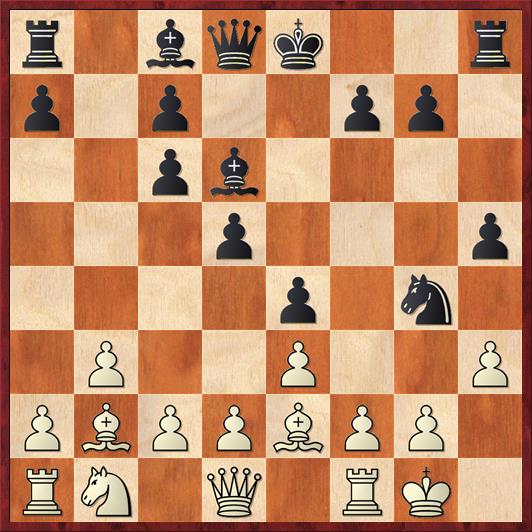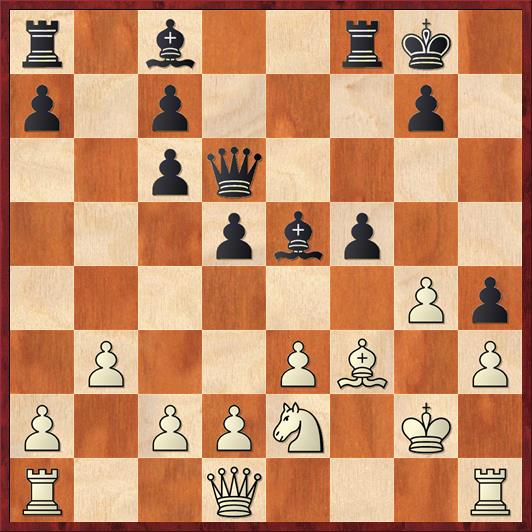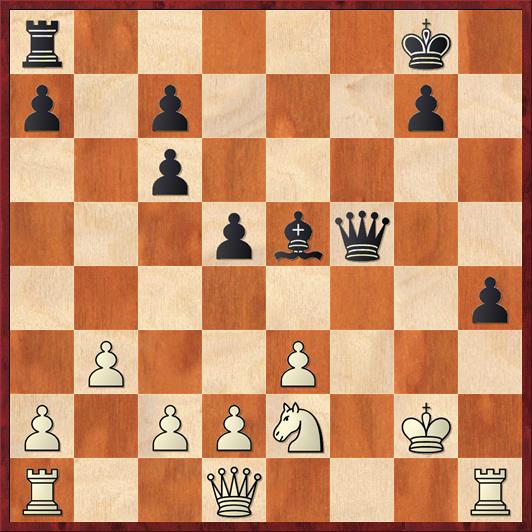The PRO (Professional Rapid Online) Chess League is well into its second season now, with six rounds complete. The league is easier to follow online than it was last year, because it now has a website independent of chess.com (http://www.prochessleague.com), and there are recaps posted on the day of the rounds. Most rounds take place on Wednesdays, although this week is an exception (round seven will be on Saturday).
I was bummed that one of the teams from my area, the San Francisco Mechanics, failed to qualify for the league. However, the other team, the San Jose Hackers, is still very much alive and kicking, led by current world #2 Shakhriyar Mamedyarov. (No, he doesn’t live in San Jose, but teams are allowed to have one “free agent” player at a time.)
San Jose got off to a shaky start but they are still in playoff contention with a 3½-2½ record. Their season may have turned around last week when they scored a 9-7 victory over the team that had been leading the Pacific Division, the Chengdu Pandas. At first it appeared that the Pandas had won, but in the year’s first cheating scandal the Pandas forfeited two wins by their fourth board Junyuan Xiao. Apparently the chess.com anti-cheating bots found his win against Mamedyarov (yes, a 2000 player beating a 2800 player) to be a little bit too suspicious.
Chengdu is still leading the division with 4½-1½, but they are tied with the San Diego Surfers and Dallas Destiny at that total, and the Australia Kangaroos are just behind at 4-2 in what suddenly looks like the most competitive division.
As strange as it may seem, my favorite game so far this season was one that San Jose lost. In round three, Ioan-Cristian Chirila of the Hackers got snagged by the Fishing Pole — an attacking formation made famous by Colorado master Brian Wall. The “fisherman” in this case was Conrad Holt of the Dallas Destiny. Holt’s mating attack should be studied by all players because it is an absolute model of piece coordination.
Ioan-Cristian Chirila — Conrad Holt
1. b3 e5 2. Bb2 Nc6 3. Nf3 e4 4. Nd4 Nf6 5. e3 d5 6. Nxc6 bc 7. Be2 Bd6 8. O-O? …
 Position after 8. O-O. Black to move.
Position after 8. O-O. Black to move.
FEN: r1bqk2r/p1p2ppp/2pb1n2/3p4/4p3/1P2P3/PBPPBPPP/RN1Q1RK1 b kq – 0 8
It’s amazing to see this kind of conceptual mistake by a grandmaster. Even an amateur would shy away from castling here, because Black’s threat are too obvious. White has no knight on f3 to defend his kingside, and his queenside pieces are undeveloped and far away. All Black needs to do is play … h5 and he will already be threatening the standard “Greek gift” sac on h2.
What was White thinking? I don’t know. He may have been playing a sort of “rope-a-dope” strategy, hoping to lure Black into going for a quick knockout and overextending himself. But in chess as in boxing, you have to be a really great defender to make the “rope-a-dope” work. And you need an opponent who lets his emotions get the better of him. Neither of those happened in this game.
8. … h5 9. h3 …
Preventing … Bxh2+, but not preventing the entry of Black’s knight.
9. … Ng4!
 Position after 9. … Ng4. White to play.
Position after 9. … Ng4. White to play.
FEN: r1bqk2r/p1p2pp1/2pb4/3p3p/4p1n1/1P2P2P/PBPPBPP1/RN1Q1RK1 w kq – 0 10
Brian Wall calls this setup the “Fishing Pole,” most likely because he is dangling the knight on g4 hoping that his fishy opponent will not be able to resist the bait. Brian usually gets into this as Black by playing 1. e4 e5 2. Nf3 Nc6 3. Bb5 Nf6 4. O-O Ng4?! 5. h3 h5. In our game, White cannot take on g4 (perhaps hoping for 10. hg hg 11. g3) because Black answers 10. hg immediately with Qh4, and the threat of mate is overwhelming.
In Brian’s version of the Fishing Pole, White can simply decline the bait and try to strike back in the center with c3 and d4. But here White doesn’t really have any way to strike back, and Black’s threats are already too strong — for example, … Qg5, … Nh2, and … Bxh3. The computer initially recommends 10. c4 Nh2 11. c5!, and this is indeed the type of thing that White is hoping for — using the threat on the bishop to discoordinate Black’s pieces. However, on deeper analysis it just plain fails. After 11. … Qg5! 12. cd Bxh3! Black’s threats are just too strong.
Thus White has to slow down Black’s attack by contesting the dark squares, either with 10. f4 or 10. g3. But both of these moves create new weaknesses on the kingside and add more fuel to Black’s attack. Frankly, I think White is just about lost.
10. g3 Ne5
And now the hole on f3 is a huge target.
11. Kg2 Qd7 12. Rh1 h4 13. g4 f5!
Very instructive. White keeps trying to close lines, but Black pounds away at them. White just doesn’t have enough pieces on the kingside to defend, and he has to make a concession.
14. Bxe5 Bxe5
Giving away the dark-squared bishop is a huge strategic loss, but there was no other way for White to hold onto his strong point on g4. We’ll see, though, that the dark squares will come back to haunt him.
15. Nc3 O-O
Again very instructive. White has survived the first wave of Black’s assault, but Black sees that his opponent’s pieces are all stepping on each others’ toes. All he needs to do, then, is bring in more attacking units. The rook was no longer needed on the h-file, so it makes sense to bring it to the f-file.
16. f4 …
White would dearly love to buy some king safety with g5 next move. But of course, Black will not let him.
16. … ef!
Obvious but powerful.
17. Bxf3 Qd6
I like Black’s quiet but strong building moves. Black threatens to take on g4, take on c3, and checkmate on g3. When even a quiet move like … Qd6 carries such a powerful threat, you know that White is in big-time trouble.
18. Ne2 …
The only way for White to survive.
 Position after 18. Ne2. Black to move.
Position after 18. Ne2. Black to move.
FEN: r1b2rk1/p1p3p1/2pq4/3pbp2/6Pp/1P2PB1P/P1PPN1K1/R2Q3R b – – 0 18
This position is a test of your chess character. Obviously Black can simply snatch the exchange on a1. Is that what he should do?
Many chess players would settle for the exchange here. In some circumstances I think I would, too. Objectively Black is probably winning.
But to beat a grandmaster, you have to play like a warrior. Given a choice between playing a long technical endgame, or pounding your opponent into submission, pounding is your best option. But watch out: White’s strategy all along has been to play the “rope-a-dope.” He wants you to get swept up in your emotions and play something unsound. So there’s definitely a bit of risk here.
Holt doesn’t back down. He chooses the path of the warrior, and that’s what makes this my favorite game of the season so far.
18. … fg 19. hg …
If 19. Bxg4, Black can “pin it and win it” with 19. … Qg6.
19. … Rxf3!! 20. Kxf3 Bxg4+!
Relentless!
21. Kxg4 Qg6+ 22. Kh3 …
If 22. Kxh4 Kf7 with mate in the offing. If 22. Kf3 Qe4+! is the most effective, with themes similar to the game.
22. … Qf5+ 23. Kg2 …
 Position after 23. Kg2. Black to move.
Position after 23. Kg2. Black to move.
FEN: r5k1/p1p3p1/2p5/3pbq2/7p/1P2P3/P1PPN1K1/R2Q3R b – – 0 23
23. … Qg4+?
Even though this move is a mistake, it is one of my favorite moves of the game! Why? Well, first of all, it tells us that Black is a human, not a bot. These days, that is not a trivial point.
But more interestingly, it shows us that Holt did not calculate his attack all the way to checkmate. It means that he truly was going on instinct as well as calculation when he decided to play 19. … Rxf3. To me, this makes the sac more impressive. If he had actually calculated all the way to checkmate, then there would be no warrior spirit involved, just a cold and clinical execution.
The reason that 23. … Qg4+ is a mistake is that Black needs to chase White’s king to a dark square. (You’ll see why in a second.) So 23. … Qe4+! 24. Kg1 Rf8 25. Nf4 Rxf4! would be clearly winning.
24. Kf2? …
If Chirila had had his wits about him, his rope-a-dope defense might actually have worked after 24. Kf1! The reason is that 24. … Rf8+ 25. Nf4 Rxf4 26. ef is only a draw, because Black does not ever get a chance to play … Bd4 with check. (That’s why Black needed White’s king to move to f2 or g1.) Believe me, I’ve checked this with Rybka. According to the computer, if Black wants to play for a win he has to settle for 24. Kf1 Qf3+ 25. Kg1 Bxa1 26. Qxa1 Qxe2 27. Rh2 with a 0.7-pawn advantage for Black. If we forget the computer evaluation and look with our eyes, we can see that something has definitely gone wrong for Black. Yes, he’s a pawn up, but White’s queen and rook have amazingly found their way to effective squares (a1 and g2) and White has some significant counterplay for his pawn.
This mutual blunder shows why chess is so hard, even for grandmasters! The critical moments of the game are upon you, your flag is hanging, your heart is pounding — yet you still have to be calm enough and objective enough to realize that there is a difference between Kf1 and Kf2.
Now Holt finishes reeling in his fish.
24. … Rf8+ 25. Nf4 …
If 25. Ke1 Qg2 wins a rook, and Black’s two passed pawns should win easily.
25. … Rxf4+! 26. ef Bd4+!
At this stage of the attack, it’s essential to see the checkmates. There are two of them — one with the queen on f2 (obvious) and the other with the queen on e4 (not so obvious). Without the bishop on d4, there is no mating net and there is no win.
27. Ke1 Qg3+ 28. Ke2 Qg2+
and White resigned, because Black will play one of the two aforementioned checkmates next move.



{ 3 comments… read them below or add one }
Nice article and wonderful game.
However…
On move 23 for black, I would have played 23…Rf8 to double cut (if there is such a thing really) the king of the f-file, and couldn`t see a defense. After checking with computer, indeed 24. Nf4 Qg5+ and white (king) gets positionally dominated since f4 is falling and the attack continues.
…not that the line really differs much of the ones that you already presented, of course. But it does perhaps highlight the importance of not rushing when control of the position is key to finish the attack.
I was watching Dallas’s live stream of this game, with commentary from a GM and a couple 2200 guys. I am pretty sure none of us noticed this Kf1 subtlety, especially since Holt was playing all his moves pretty much instantly.